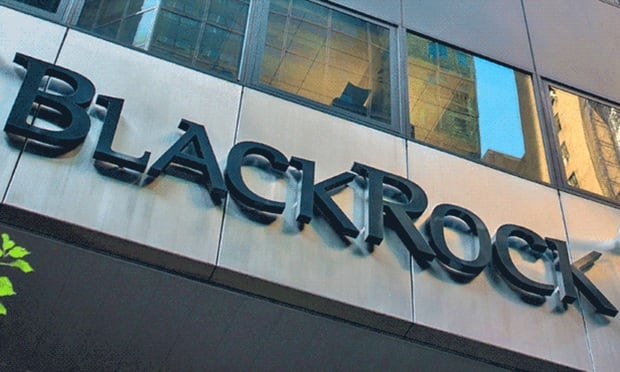According to a recent study by LinkedIn, 59 percent of organizations intend to invest more in employer brand this year than last. But, what exactly are these employers investing in?
Related: 5 ways to keep your employees happy and loyal
The concept of employer brand is one that has been floated for many years, but few employers seem to grasp that brand is more than a set of steps that you can follow in order to make your employees like you. Brand is what makes your organization uniquely your organization — a distinction that makes current and future employees prefer to work for your company.
But brand is more than simply fun outings or after work get-togethers. Brand is more than the way you run your Twitter account. Employer brand is how people holistically think of working at your company. It’s how they talk about the day-to-day, and not just the fun times.
Brand is how your managers interact with your employees, and how your employees feel that they are treated — and how that treatment translates into the way that employees recommend your organization to others.
It’s a lot harder to invest in something like “how my managers treat others” then it is to invest in a new foosball table, but it’s the first investment that will truly count when it comes time to evaluate how your employees and future candidates feel about working for your company.
Consider the following: 69 percent of out-of-work job seekers wouldn’t take a job with a company that has a bad reputation and 75 percent of exiting employees wouldn’t recommend their organization. If so many of your former employees are potentially denigrating your reputation, you stand to miss out on key talent that would have otherwise applied to your open positions.
So, how can you build an impenetrable employer brand?
Here are three critical points in the employee lifecycle to consider:
Onboarding
The first 90 days can make or break an employee’s opinion of your organization. How your team sets expectations, educates new employees and assimilates employees into their culture can weigh heavily in determining a new hire’s opinion of your organization.
Related: 15 ways to help new employees feel at home
Starting a new job can be incredibly intimidating, and, while you hopefully made your hire with confidence in that person’s ability to hit the ground running, it’s helpful to take the time to ramp that employee up.
Do you have training and development videos or workshops to help the employee understand how to navigate processes and expectations? Does that employee have one-on-ones with their new teammates to understand their role in relation to the rest of the team or organization? And do you take time to introduce your employee to the company’s culture? Does your employee have all of the tools they need to be successful once they begin, including hardware and software? (You’d be surprised how often the last one is overlooked!)
Onboarding is so much more than just signing the paperwork. Even if you don’t have the time and resources to roll out a red carpet each time an employee joins the company, they should feel as if you do. Even something as simple as a team lunch to welcome them and a functioning computer warmed up and ready to go can go a long way toward making a new employee feel valued and at home.
Career development
When you hire an employee, you’re often looking for someone to fill a specific job requisition, but, these days, people want to feel like more than just job descriptions. You may be looking at your hires to carry out a single role, but they are looking at you to help them develop a career.
Related: Millennials want benefits, challenges, and opportunities
Even if mobility is not your first priority, helping your employees develop themselves, should they want to, can give your organization a brand boost.
At least a quarter of employees say that they would be more satisfied at work if they had opportunities for career growth, and both engagement and retention rise when you show employees a path to remaining within the organization while continuing to build their skills.
Employees who are denied the ability to grow their careers may become bitter; they may choose to exit the organization out of frustration, and then go on to leave a negative review of the organization on a website like Glassdoor or vent to friends or family members about their experience.
No, you may not be able to internally promote every employee, but you can take an active interest in their development, whether by allocating funds for certifications, conferences and classes; offering time off for training; or implementing a mentoring program, whether formal or informal.
Show your employees that you value them, by investing in their careers. Even if they don’t stay at your organization forever, they will be more likely to refer other talent or leave glowing reviews of your company when and where it counts.
Offboarding
In some cases, how you transition employees out of the company can be as or more important than how you bring them in.
Related: Workers skills slipping, but who’s to blame?
While an exiting employee may no longer be top of mind, your organization may remain top of mind for them, especially if they are on the receiving end of a layoff.
Layoffs don’t have to be a negative event, however; while no one likes to lose a job, if your organization handles notification and transition well, you may at least repair the relationship with employees and create brand ambassadors and promoters.
Two tips for improving outcomes during a layoff include training your managers to give notification and offering outplacement.
Delivering a layoff notification takes finesse and skill, and most managers will not have had prior experience and/or training in properly communicating with an impacted employee. Not only does a lack of training leave the affected employee in a negative state of mind, but it also puts your manager into an uncomfortable situation that can make them feel equally burdened by the event.
Invest time in training managers so that they feel fully prepared to head into this difficult meeting and so that they can prepare your impacted employees for a successful transition.
As for the transition itself, make sure that your employees know that you plan to take care of them, even if they must leave the organization. Offer outplacement that includes career coaching, emotional resiliency, resume support, and effective tools for job searching, networking and interviewing.
If you create opportunities for laid off employees to be successful and let them know that your investment in their well-being continues even after they have left the company, they may remain in your talent pipeline as rehires, refer friends and family members to open positions in the future or even become customers or partners of the organization in their next role.
Outplacement can go a long way toward continuing to foster a good relationship with your employees, even after they have left the organization. This is important, because they remain representatives of your brand, even if they are no longer actively employed by the company.
You have so many opportunities to improve your employer brand at important touch points in each employee’s lifecycle. Don’t squander those opportunities by rushing to “meet the bottom line.” Employees need to be onboarded, trained, and supported through transition. Show them that you want to set them up for success in their careers, and you will do more for your employees than a foosball table ever will.
© Touchpoint Markets, All Rights Reserved. Request academic re-use from www.copyright.com. All other uses, submit a request to [email protected]. For more inforrmation visit Asset & Logo Licensing.






